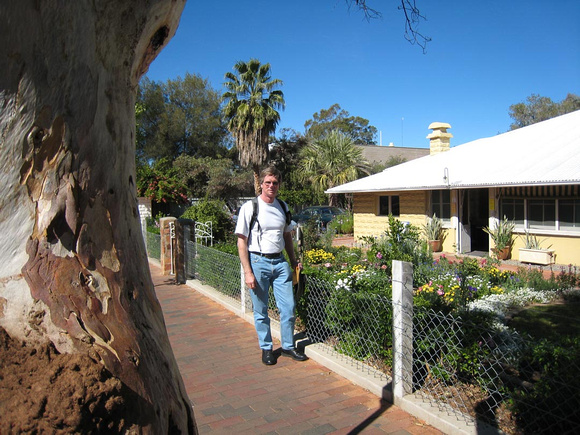Hermansberg Mission
I visited Alice Springs, Uluru, Katajuta, Palm Valley and other sites, including Hermansberg on a trip to Central Australia in 2007.
I was utterly impressed by the quality of the light both during the day and in the evening, as well as the brilliance of the natural colours of sky, earth and vegetation. I took some beautiful landscape shots. However I was moved in a different way when I visited Hermansberg, and going through these shots recently I decided to share my experience. I was there just at the time of the Federal government’s take-over of Aboriginal personal finances and a re-structuring of health services. I was aware of this going on in the background, and this was reinforced by seeing very battered and downtrodden looking Aborigines in the streets of Alice, whom I later discovered were not representative of the general population.
I ran into an old friend Sue Stent, who was living there and working in the nursing services. She reinforced all that the government had been promoting concerning its ‘takeover’, and indeed something really needed to be done to protect kids and others at the time. I remember very strongly one of the whistle blowers discussing the poor conditions in some of the Aboriginal camps and my nursing friend Sue agreed wholeheartedly. I then heard other opinions from the Aboriginal community, mentioning stereotyping, the fact that many other aboriginal families lived ok lives without the problems of poor diet, alcoholism, poor health, child molestation and so on. They felt that the ‘invasion’ was excessive and overbearing, paternalistic and interfering. I could also see their point.
Our trip to Hermansberg was part of a package we had subscribed to. I didn’t really know much about it. It is 130 kms west of Alice Springs and we bussed there, and initial impressions are of a gentle quiet white-washed adobe-walled old settlement. When we got off the bus, we were greeted by a not so distant wailing from a nearby 1970’s Lutheran church in the middle of a funeral, and it reminded me that we all have different cultural habits, and that Aboriginal people express grief in different ways to we reserved Anglos.
The policy of the 1950’s Assimilation Policy was a poor one, and it has been widely debunked. I am old enough to have seen elements of it in practise, which at the time I did not really understand, or more truthfully which I saw as something necessary and done by trustworthy government officials. Hermansberg came into being in the late 19C and became part of the ‘assimilation’ discourse of the nineteen fifties and it was run as a way of ‘de-aborginizing’ young people and re-training them into the white way of life. Part of this was a series of workshops where white man’s skills were taught, and where Aboriginal men were destined to be gardeners and carpenters, and the women domestic and purveyors of 'female' crafts.
Hermansberg was set up in 1877 by German Lutheran missionaries. A school-house for boys and girls was established in the early C20. During the thirties it had around 100 students. It was a Christian mission whose core project was to convert the heathen. In doing this, children were mixed from different tribal backgrounds which destroyed their grip on their own Dreaming cultures. The mission was started by ‘people who were far removed from the Centre with little or no knowledge about Aboriginal culture or conditions in the Centre.’ Various problems ensued over the decades, including wholesale withdrawl of government support during WW1 and WW2. Issues included local farmers eying off the 1200sq mile landholding, arguments between various Lutheran teaching factions, arguments between differing Aboriginal factions, STD’s, and shockingly, starvation and ill health due to severe droughts, lack of water, and consequent incapacity to grow vegetables and fruit.
There is much more to this history, and it needs to be tempered by the sacrifices of what we now see as then misguided missionaries. I was struck by the sadness and futility of the total exercise, and the sense of suffering of past generations.
Central Australia overpowers the senses. It is magnificent. Yet it is huge, isolated and harsh. There is now a successful Hermansberg art establishment set away from the original mission. As we were leaving in the bus, we were confronted by the high tech solar power system now providing local energy. It’s good of course, but it struck me as a symbol of money being able to do certain things – but ultimately being incapable of forcing others to go where they do not want to go.
© CHRISTOPHER SANDERS PHOTOGRAPHY



